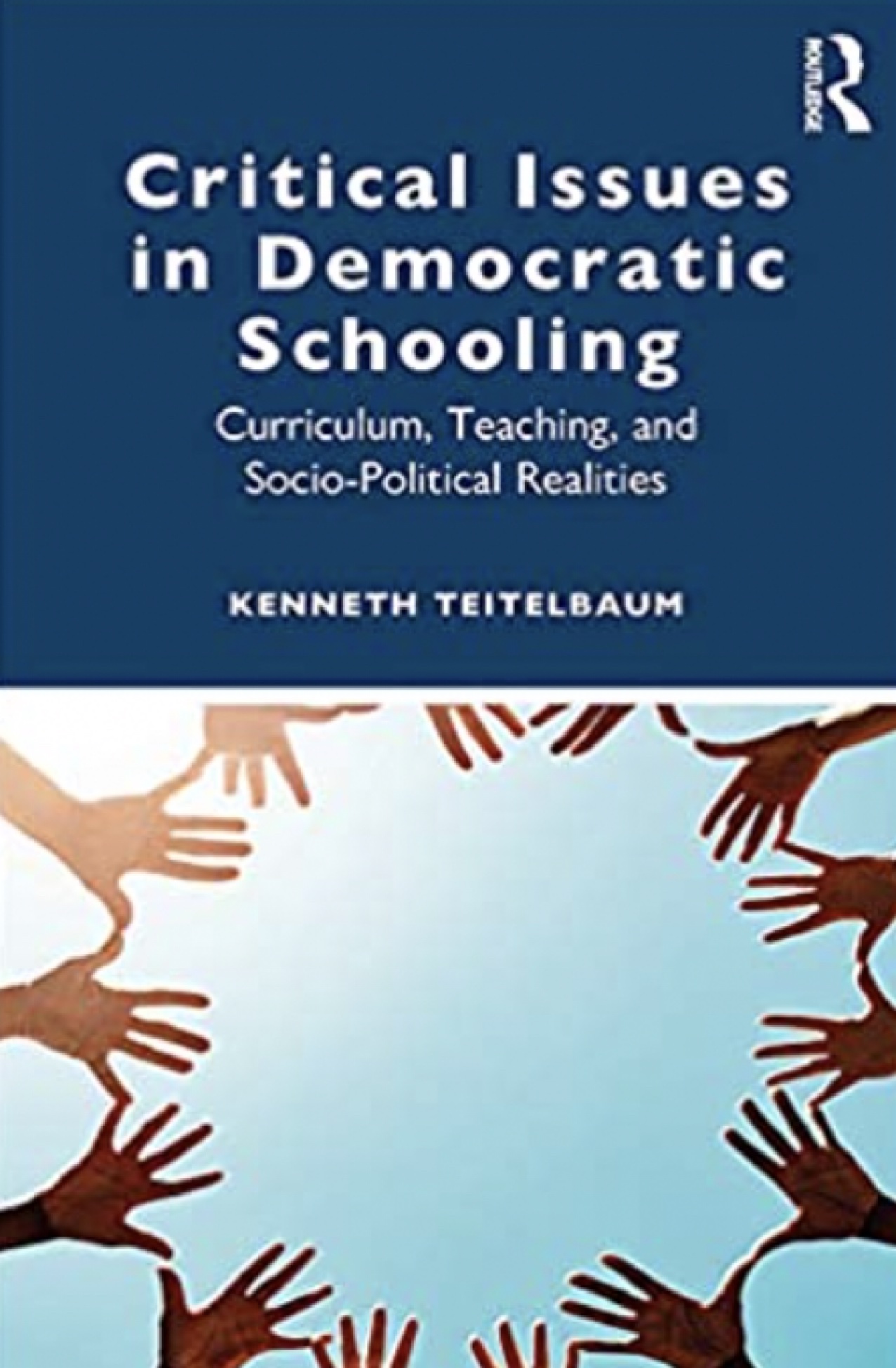
Critical Issues in Democratic Schooling: Curriculum, Teaching, and Socio-Political Realities by Kenneth Teitelbaum is an ideal textbook for undergraduate and graduate teacher education programs. Each chapter can easily form the basis for whole class and small group engaging conversations on topics that prospective teachers need to confront. It’s also a great book that will allow practicing teachers and administrators to question their practices. If you are looking for a book to give all of the teachers in your building for professional development, look no farther.
Part I: Teaching and Teacher Education
1. Teaching Has Its Own Rewards
- Teaching is a profession for those who want to create and inspire, for those who love learning, for those who care about our future, and for those who like to watch young people develop. Students don’t reveal what they are thinking or learning. The most important learning is difficult to capture and may not be known until much later. Likewise, the rewards of teaching are also difficult to measure. (Doug: Like Ken, positive feedback from former students and parents always makes my day.)
2. Despite What Some Think, Teaching Isn’t Easy
- This thinking emanates from the fact that mostly women taught in the last 150 years. A child’s education begins at home so all parents are essentially teachers. Stresses faced in the home and elsewhere outside of school impact behavior in school add difficulties when it comes to dealing with emotional issues and evolving subject matter. The questions of who selects the content and what content to select are also central. Decisions regarding how to deliver content seem endless as are the roles that teachers are expected to play. Time may be the biggest constraint. Teachers, therefore, need proper support and compensation.
3. Reasons to be a Teacher
- It certainly is not the money. Ken’s research and my own show that teacher salaries have not kept up with inflation since I started in 1970. There has also been some erosion in benefits and loss of autonomy due to test-driven expectations and their repercussions. Many teachers work well beyond the 40-hour work week and most will tell you that students have become more unruly over the years. This may have caused fewer people to prepare for a career in teaching, but the current shortage should make jobs easier to find.
- Ken finds seven reasons that still draw people to the profession. 1) Independence and Collaboration: To some extent, teachers are free to decide how they will present the desired content. They should also be able to work with other teachers, although the time available to do so depends on leadership. 2) Lifelong Learning: If teachers seek excellence, they are always thinking about how to improve. As lifelong learners, they will enjoy learning and improving daily. 3) Creative Imagination: Taking reasonable creative risks will make teaching more fun for all. This will help you avoid getting stuck in a rut but consider discussing such risks with your supervisor. 4) Forever Young: Lighting fires in young people is exhilarating and revitalizing. It keeps you stay hip and young at heart. 5) A Noble Profession: In spite of the fact that the media often bashes schools, teaching is widely considered a noble profession by the public. 6) Helping to Create a Better World: Teaching is a profession of hope, and even though you won’t know exactly how you made the world better, you will believe that you did. 7) Student Growth: We all have stories about teachers who made a difference in our lives. You may not see incremental growth daily, but it’s there.
4. “Work With What You’ve Got”
- If you see oppression or injustice in any form be sure to speak up. If you see that school practices or policies at any level are ineffective say so. You may not have all the autonomy you want, but work with what you have. You have to believe that schools can change over time for the better. You may have to make some small compromises, but they are probably worth it.
5. Lessons from Alternative (Progressive) Schooling
- These schools are mostly private so the students are more likely to have more means and skills than typical public school students. Ken has worked in, visited, and read about such schools. In essence, the students are much more in control of what they study, the teacher talks less, and usually intervenes when students need help with skills necessary to pursue their chosen learning. Students are essentially self-directed learners, which requires skills that poor students may not have.
- While such schools are not noted for the longitudinal follow-up that can determine how their students did, the data available suggests that the students do fine and tend to be happier and more self-confident. The atmosphere of trust found at these schools could account for that. Creativity, problem-solving, and project-based learning are seen throughout the day. Ken hopes to see more of this in public schools in spite of the roadblocks created by standardized curriculum and testing.
DrDougGreen.com If you like the summary, buy the book





